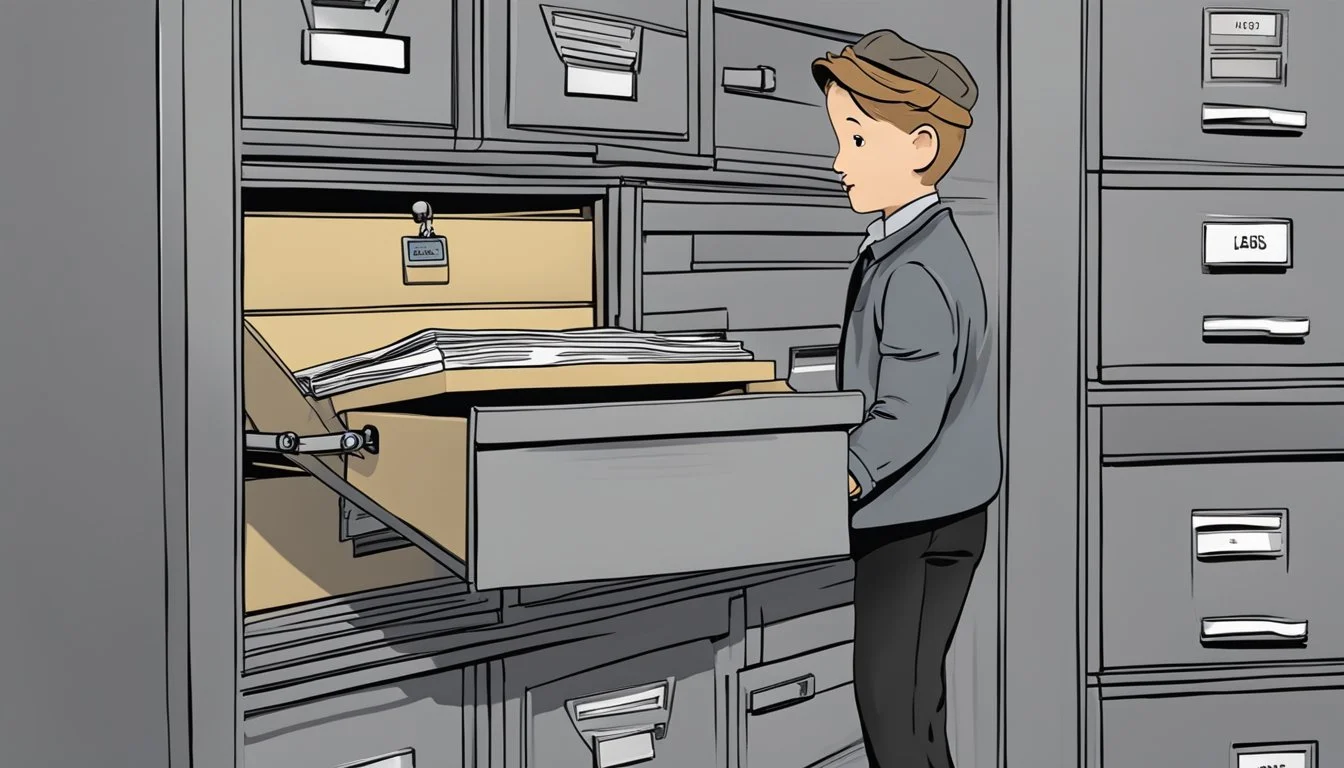Revealed: Shocking New Evidence in JonBenét Ramsey Case from 60 Minutes Will Change Everything!
The unsolved murder of JonBenét Ramsey continues to captivate public interest nearly three decades after the six-year-old beauty queen was found dead in her family's Boulder, Colorado home. Recent developments, including new DNA technology and evidence previously overlooked by investigators, have reignited hope for solving this cold case.
60 Minutes Australia has revisited the Ramsey case, shedding light on crucial evidence that police may have ignored for years. The program examines alternative suspects and theories that challenge the initial focus on JonBenét's parents as the primary suspects. This renewed attention has prompted calls for the Boulder Police Department to reexamine the case using advanced forensic techniques.
Despite being cleared as suspects, JonBenét's family has faced ongoing public scrutiny and speculation. John Ramsey, JonBenét's father, has criticized the handling of the investigation, alleging that detectives jumped to false conclusions rather than thoroughly exploring all leads. As the search for justice continues, the case remains a haunting reminder of the complexities involved in solving high-profile crimes.
Overview of the JonBenét Ramsey Case
JonBenét Ramsey, a 6-year-old beauty pageant contestant, was found murdered in her family's Boulder, Colorado home on December 26, 1996. The case quickly became one of America's most infamous unsolved crimes.
Her body was discovered in the basement, having been strangled and bludgeoned. A mysterious ransom note was found in the house, demanding $118,000 for her safe return.
The Boulder Police initially focused their investigation on JonBenét's parents, John and Patsy Ramsey. This decision has been criticized by some as potentially overlooking other suspects and crucial evidence.
Over the years, various theories and suspects have emerged, but no one has been charged with the crime. The case remains open as a cold case, with periodic reviews of evidence using new technologies.
Recent developments include new DNA testing methods and potential evidence that may shed light on the killer's identity. John Ramsey continues to advocate for further investigation into his daughter's murder.
The JonBenét Ramsey case has captivated public interest for decades, spawning numerous documentaries, books, and TV specials. It remains a subject of intense speculation and ongoing investigation.
Initial Investigation and Evidence
The JonBenét Ramsey case began with a complex crime scene and cryptic evidence. Key elements included a mysterious ransom note, unclear forensic findings, and multiple potential suspects.
Crime Scene Analysis
Police arrived at the Ramsey home on December 26, 1996, after Patsy Ramsey reported her daughter missing. The house was not immediately secured as a crime scene, allowing friends and family to move freely.
JonBenét's body was discovered in the basement by her father, John Ramsey. She had been strangled with a garrote and suffered a skull fracture.
Investigators noted signs of a possible break-in, but also found no footprints in the snow around the house. This inconsistency puzzled detectives from the start.
Ransom Note Details
A lengthy three-page ransom note was found on the stairs. It demanded $118,000 for JonBenét's safe return - coincidentally matching John Ramsey's recent bonus amount.
The note was written on paper from a pad found in the Ramsey home. Handwriting analysis proved inconclusive in identifying the author.
Experts found the note's content unusual for a kidnapping scenario, citing its length and personal details about the family.
Early Suspects and Theories
Initially, police focused on the parents as prime suspects. Their behavior and inconsistent statements raised suspicions.
John and Patsy Ramsey maintained their innocence throughout the investigation. They suggested an intruder theory as an alternative explanation.
Other suspects included family friends and individuals with access to the home. However, DNA evidence found on JonBenét's clothing did not match any known suspects.
The lack of forced entry and the ransom note's origin within the house led some investigators to doubt the intruder theory early on.
Development in DNA Analysis
DNA technology has advanced significantly since the JonBenét Ramsey case began in 1996. These improvements offer new hope for solving this decades-old mystery.
Improvements in DNA Technology
DNA analysis methods have become far more sophisticated and sensitive. Modern techniques can extract usable genetic material from much smaller samples than was previously possible. This allows investigators to re-examine old evidence that may have been unusable before.
Advanced DNA sequencing now provides a more complete genetic profile from trace amounts of biological material. This increased level of detail helps narrow down potential suspects with greater accuracy.
DNA Contributor Identification
Genetic genealogy has emerged as a powerful tool for identifying DNA contributors. This technique compares crime scene DNA to large genetic databases to find potential relatives of the unknown person.
DNA detective CeCe Moore believes this method could quickly identify JonBenét's killer if applied to the case. She estimates it might only take hours to get results once the evidence is processed.
Impact on the Ramsey Case
In 2008, new DNA evidence found on JonBenét's clothing led prosecutors to clear the Ramsey family. This shifted the focus of the investigation away from her parents.
The Colorado Cold Case Team announced progress in 2022 using advanced DNA analysis. However, detectives who originally handled the case have been reluctant to release evidence for new testing.
Experts believe that re-examining key pieces of evidence with modern DNA technology could provide crucial breakthroughs. This includes items like the garrote used in the crime.
Unlocking New Leads
Recent developments have sparked renewed interest in the JonBenét Ramsey case. Investigators are exploring fresh angles and re-examining evidence with modern forensic techniques.
Cold Cases and Fresh Eyes
The JonBenét Ramsey case has baffled investigators for decades. New experts bring fresh perspectives to cold cases, often uncovering overlooked details. Advanced technology allows for re-analysis of old evidence, potentially revealing new clues.
DNA testing has evolved significantly since 1996. Samples previously deemed inconclusive may now yield valuable information. Forensic genealogy, a technique not available during the initial investigation, could help identify potential suspects.
Digital reconstruction of the crime scene provides investigators with new insights. This technology allows experts to visualize and analyze the events from different angles.
Colorado Cold Case Team Involvement
A dedicated Colorado Cold Case Team has taken on the JonBenét Ramsey investigation. This specialized unit brings together experienced detectives, forensic experts, and analysts. Their collective expertise enhances the chances of solving long-standing mysteries.
The team has reviewed over 1,400 pieces of evidence related to the case. They're applying cutting-edge forensic techniques to re-examine physical evidence. This includes trace DNA analysis, advanced fingerprint comparisons, and fiber analysis.
Interviews with witnesses are being conducted to gather new information. The team is also revisiting old leads with a fresh perspective.
Intruder Theory Re-examination
The intruder theory has gained renewed attention in recent years. Investigators are re-evaluating potential entry points to the Ramsey home. They're examining window and door security, considering how an intruder might have accessed the house.
Unidentified DNA found on JonBenét's clothing remains a crucial piece of evidence. Advances in DNA technology may help identify its source. The team is comparing this DNA profile against expanded databases of known offenders.
Behavioral profiling techniques are being applied to better understand the potential intruder. This analysis helps narrow down suspect characteristics and possible motives.
Ramsey Family Perspective
The Ramsey family has maintained their innocence in JonBenét's murder for decades. John Ramsey, JonBenét's father, has been particularly vocal about the case and his beliefs regarding the investigation.
John Ramsey's Account
John Ramsey has consistently denied any family involvement in JonBenét's death. He believes an intruder was responsible for the crime. Ramsey has pointed to evidence supporting this theory, including a broken basement window and unidentified DNA found on JonBenét's clothing.
He has criticized the Boulder Police Department's handling of the case. Ramsey claims investigators focused too narrowly on the family while ignoring other leads. In recent years, he has advocated for advanced DNA testing of evidence.
Public Statements and Books
The Ramsey family has made numerous public appearances to discuss the case. They have participated in television interviews, documentaries, and news programs like 60 Minutes. These appearances aim to maintain public interest and rebut accusations against them.
John and Patsy Ramsey co-authored the book "The Death of Innocence" in 2000. It presented their account of events and challenged media portrayals of the family. John Ramsey later wrote "The Other Side of Suffering" in 2012, detailing his spiritual journey after the tragedies in his life.
Media and Public Influence
The JonBenét Ramsey case sparked an unprecedented media frenzy. News outlets provided extensive coverage, with many speculating about potential suspects and motives.
Television played a significant role in shaping public perception. Programs like 60 Minutes Australia and other true crime shows regularly featured segments on the case, often presenting new theories or evidence.
Social media platforms became a hub for discussions and amateur sleuthing. Facebook groups and Reddit threads dedicated to the case emerged, allowing people to share information and theories.
YouTube videos analyzing the evidence gained millions of views. Content creators produced in-depth documentaries and discussion videos, further fueling public interest.
Media coverage often focused on sensational aspects of the case. This approach sometimes overshadowed factual reporting and influenced public opinion.
The case's high-profile nature led to numerous books, movies, and TV specials. These productions both reflected and shaped public understanding of the events surrounding JonBenét's death.
News websites frequently published articles with new developments or revisited aspects of the case. This constant stream of information kept the story in the public eye for decades.
Advances in Forensic Methods
Forensic techniques have evolved significantly since the initial JonBenét Ramsey investigation. New technologies and methodologies have emerged, offering fresh perspectives on the case.
Stun Gun Hypothesis
The stun gun theory gained traction in the Ramsey case. Investigators noticed unusual marks on JonBenét's body that resembled those made by a stun gun. This hypothesis suggested the potential use of such a device during the crime.
Advanced imaging techniques have allowed for closer examination of these marks. Experts have compared them to known stun gun injuries, seeking to validate or refute this theory.
The debate continues among forensic specialists. Some argue the marks are consistent with stun gun use, while others propose alternative explanations.
Modern Profiling
Criminal profiling has undergone significant advancements since the 1990s. New psychological models and data analysis techniques have refined this investigative tool.
Modern profilers can now draw from extensive databases of similar cases. This wealth of information allows for more accurate behavioral predictions and suspect characteristics.
Linguistic analysis has also become a powerful profiling tool. Experts can scrutinize ransom notes and other written evidence with greater precision.
These advancements have led to fresh insights into the Ramsey case. Profilers have reassessed the crime scene evidence and behavioral patterns, potentially narrowing the field of suspects.
Legal Proceedings and Challenges
The JonBenét Ramsey case faced numerous legal hurdles over the years. A grand jury investigation took place from 1997 to 1999, examining evidence and witness testimonies related to the murder.
In 2008, a significant development occurred when DNA evidence led to the Ramsey family being officially cleared as suspects. This marked a turning point in the investigation's focus.
Despite these advancements, the case remained unsolved. Law enforcement agencies faced challenges in identifying and prosecuting a definitive suspect. The passage of time further complicated efforts to gather new evidence and interview witnesses.
The investigation encountered setbacks due to initial mishandling of the crime scene. This led to difficulties in preserving crucial forensic evidence, potentially hampering future legal proceedings.
Ongoing legal battles surrounded the release of grand jury documents. In 2013, a judge ordered the partial release of these records, shedding new light on the early stages of the investigation.
The case continues to generate public interest and speculation. Legal experts and investigators periodically revisit the evidence, hoping to uncover new leads that could finally bring closure to this long-standing mystery.
The Ramsey Case in Contemporary Culture
The JonBenét Ramsey case continues to captivate public interest decades after the tragic events of 1996. True crime documentaries, podcasts, and television specials regularly revisit the unsolved murder.
Media coverage often focuses on new evidence or theories about potential suspects. The case has become a touchstone in discussions about criminal investigations and media ethics.
Popular culture references to JonBenét Ramsey appear in music, film, and television. Her story has inspired fictional portrayals and been the subject of numerous books examining the case from various angles.
Online communities dedicated to discussing and analyzing the Ramsey case remain active. Amateur sleuths and armchair detectives continue to debate evidence and propose new theories.
The case has had a lasting impact on how child beauty pageants are perceived. It sparked debates about the appropriateness of such competitions and raised awareness about child exploitation.
JonBenét's story is often cited in discussions about unsolved crimes and cold cases. It serves as an example of the challenges faced by law enforcement in high-profile investigations.
Web and User Experience on True Crime Sites
True crime websites strive to balance user engagement with ethical considerations. They implement policies and features to enhance content quality while prioritizing user safety and data protection.
Cookies Policy and User Data
True crime sites typically use essential cookies to enable core functionality. These track login status and remember user preferences. Optional cookies may be offered for analytics and personalization.
Sites often provide clear cookie policies explaining data collection practices. Users can usually control which optional cookies they accept. Some sites allow granular choices for specific tracking types.
Privacy policies detail how personal information is handled. Many true crime platforms commit to not selling user data to third parties. Data retention periods are typically specified.
Improving Content and User Safety
Content moderation helps maintain quality and accuracy on true crime sites. Fact-checking processes verify details before publishing. User-generated content may be reviewed before appearing publicly.
Comment sections often have rules against harassment or graphic descriptions. Automated filters can flag potentially inappropriate content for human review. Some sites require accounts to comment.
Trigger warnings are commonly used for sensitive material. Age restrictions may limit access to graphic content. Resources for mental health support are frequently provided.
Sites may partner with law enforcement to aid investigations when appropriate. Tip submission systems allow users to share potential case leads securely.





